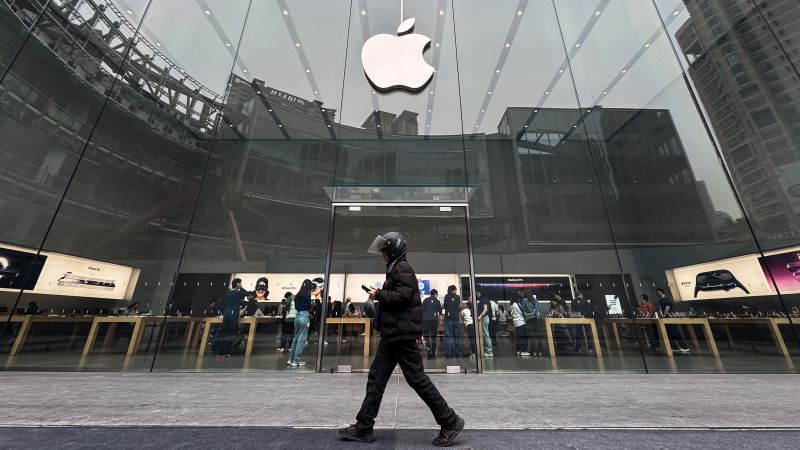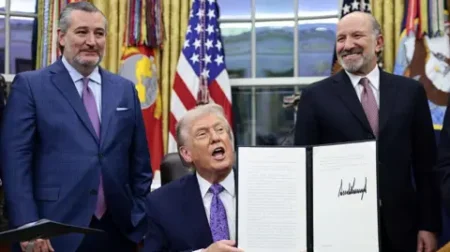In an era when the price of technology appears to keep climbing, consumers are bracing themselves for even higher costs due to impending tariffs imposed by former President Donald Trump on goods from foreign countries, particularly China. This development is expected to impact various technological products, notably those that are staples in everyday life, such as the popular iPhone, laptops, vehicles, and even smaller devices like headphones and computer mice. Analysts are predicting substantial hikes in prices, raising concerns among consumers who may already be feeling the pinch from current rates.
Given the heavy reliance on Chinese manufacturing for its products, Apple is likely to see significant increases in the price of its iPhone. Recent analyses suggest that the cost of producing an iPhone could skyrocket as much as 125%, should Trump’s tariffs endure. Observers note that this situation has developed amid an escalating trade dispute with Beijing, where a temporary reprieve on tariffs was granted for some nations while China remained excluded from these benefits.
To respond to the situation, Apple must think tactically about the iPhone inventory that is currently stored in the U.S. While they are positioned for the short term, any continued tariffs may induce a long-term reassessment of their sourcing, manufacturing, and product release strategies. Unlike the previous administration, which had granted Apple exemptions on certain goods, the current conditions do not suggest any similar level of immunity, leading to a poignant skepticism surrounding the company’s future pricing strategies.
Industry analysts, such as Jack Leathem from Canalys, express a clear belief that Apple is poised for a “period of pain,” which will inevitably lead to price increases. Apple has refrained from providing specific comments regarding the matter, leaving many to speculate on the future pricing landscape. Currently, approximately 90% of iPhone production occurs in China, according to estimates from Wedbush Securities. If tariffs significantly affect costs, the timeline and extent of price increases remain uncertain; however, demand ahead of potential hikes could dictate when those increases are implemented.
Market observers infer that recent trends suggest Apple may only have enough supply to meet demand for a limited period. Estimates vary, with some stating that Apple has roughly three to six weeks of iPhone inventory available in the United States, dependent on fluctuating consumer interests. These dynamics could indicate that any anticipated price adjustments could occur sooner rather than later as iPhone stock levels dwindle.
As pricing strategies unfold, it’s clear that the situation is fluid; Apple’s reaction to tariffs will heavily depend on whether they and their suppliers can absorb the costs. Analysts have projected drastic increases in the price of higher-end models, with predictions that a base model like the iPhone 16 Pro Max could see a severe markup in costs if tariffs are maintained. Wireless carriers may pivot their strategies by promoting previous iPhone models at discounts or offering installment payment plans, which may help some consumers digest these potential hikes.
Interestingly, the administration has suggested the possibility of moving iPhone production back to the U.S., but industry experts such as Karoline Leavitt cast doubt on this potential reality. Over the last few years, Apple has been working to diversify its supply chain, removing some dependencies on Chinese-made products; however, should the company ultimately shift assembly to the U.S., it would still rely heavily on components sourced from Asia.
Research conducted by analysts at Bank of America notes that manufacturing iPhones domestically could inflate production costs by as much as 20%. Indeed, creating iPhones in the U.S. could potentially inflate the price points to unprecedented levels, making affordability a significant concern for consumers. Moreover, Apple’s forecasts for investments in U.S. facilities include tech innovations rather than production centers, indicating a commitment that does not align with immediate iPhone manufacturing needs and timelines.
The practicality of workforce availability in the U.S. also raises questions. As management expert Willy Shih states, it may prove challenging for Apple to recruit a workforce willing to partake in manufacturing jobs. The broader implications of supply logistics are pivotal as Apple contemplates product releases and operational timelines in light of tariffs.
Ultimately, the tariffs have introduced a new layer of complexity for Apple and consumers alike. Anticipating new iPhone releases or any shift in product launch schedules could also be influenced by the ongoing tariff situation. While Apple remains silent on any potential adjustments to its strategy, industry experts are predicting that temporary alterations might be necessary. As the market evolves, consumers and shareholders alike await clarity amidst the ever-changing landscape of trade policies and pricing.











